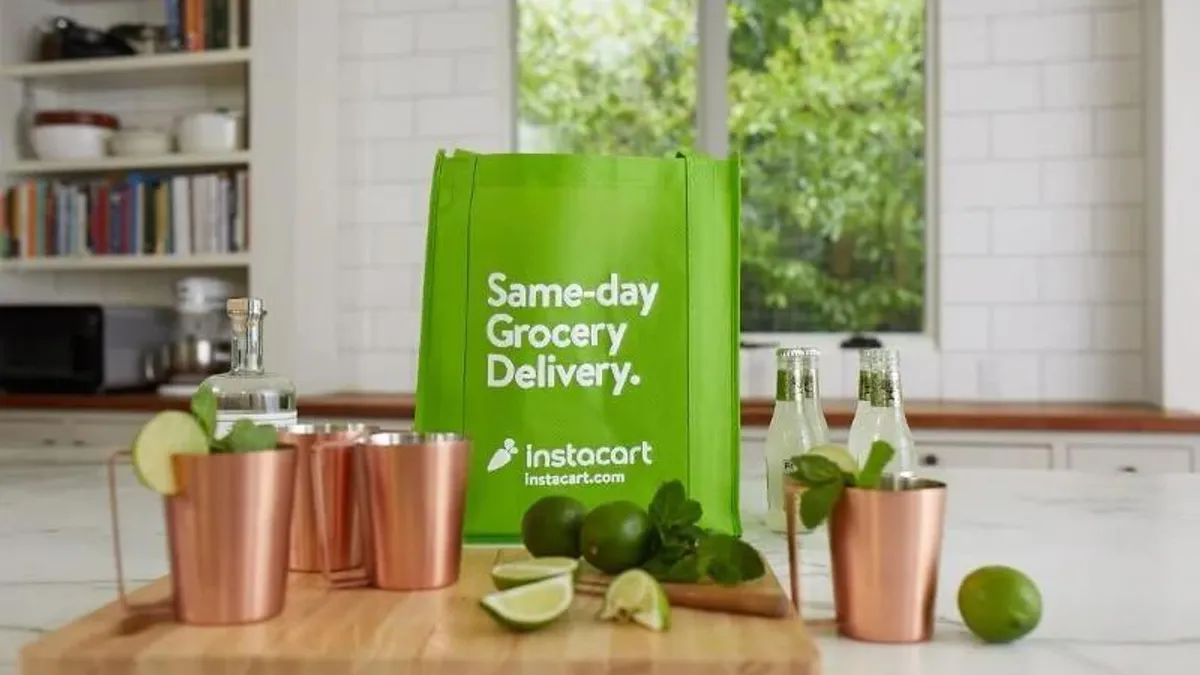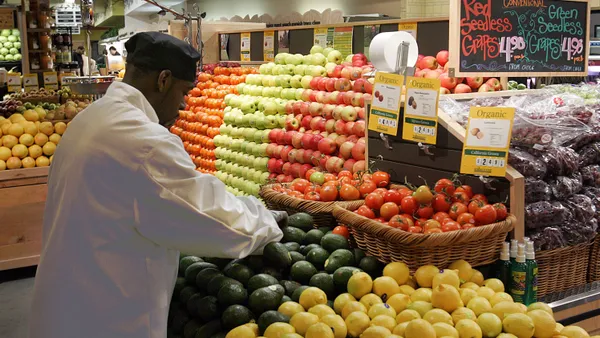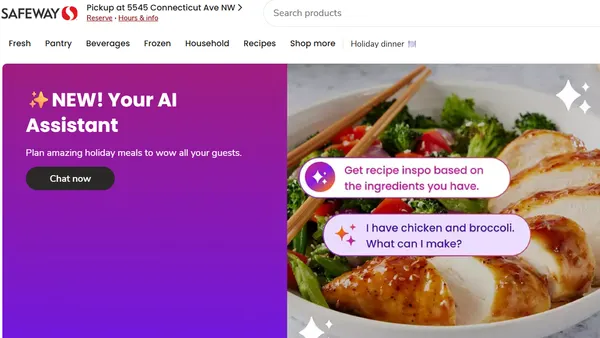Dive Brief:
- Instacart’s sales declined 4% during the first quarter of 2022 compared with the same period last year, continuing a downward trend that began in early 2021, according to data published last Thursday by Bloomberg Second Measure.
- The grocery e-commerce company is also seeing average quarterly sales per customer lose steam. Shoppers spent an average of $576 on Instacart’s platform during the first quarter of the year, down 9% from the first quarter of 2021, the research shows.
- After roaring ahead earlier in the pandemic, Instacart is weathering stiff headwinds as it looks to build lasting ties with retailers and consumers amid quickly shifting market conditions.
Dive Insight:
Instacart’s business remains ahead of where it was before the COVID-19 crisis began, but the company’s waning sales in recent quarters underscore the significant challenges that lie in its path.
After establishing a dominant position in the grocery e-commerce space, the company is facing growing competition from other third-party providers, like Uber Eats and DoorDash, as well as from retailers such as Amazon that provide their own delivery services. Meanwhile, inflation is driving up food and fuel prices, eroding people’s spending power and adding to the pressure Instacart faces, Bloomberg Second Measure notes.
However, Instacart is attracting more customers even as people spend less, according to the report. The company had 5% more customers in the first quarter of 2022 than it did during the same period in 2021 and 65% more than in the first quarter of 2020, the data indicates, suggesting that its overall popularity with shoppers remains strong.
The report also points out that Instacart’s ability to attract business varies sharply by market, with sales in some areas growing fast even as revenue sags in other regions and overall.
Four of the nation’s 10 most populous metropolitan areas — Houston, New York, Philadelphia and Dallas — delivered sales year-over-year growth of at least 5% during the first quarter of 2022. Conversely, sales fell in the remaining six, with revenue in Los Angeles falling the most at 24%.
Instacart has been working to broaden its appeal to retailers beyond its traditional grocery delivery business in an effort to diversity. The company has taken steps to position itself as a broad-based technology supplier for retailers, adding automated checkout technology to its array of offerings through the purchase of Caper and emphasizing the advertising capabilities its marketplace provides.
Instacart has also been working with retailers to offer 30-minute convenience delivery and recently unveiled a suite of services that includes 15-minute delivery.
Notably, Instacart, which had long described itself in press releases as an “online grocery platform,” recently changed that wording to “retail enablement platform.”
On Tuesday, Instacart announced that it has expanded its grocery presence in Canada through new partnerships with retailers including Metro, Giant Tiger and Galleria Supermarket. The company said it now offers same-day delivery service to about 90% of Canadian households across all 10 of the country’s provinces.











